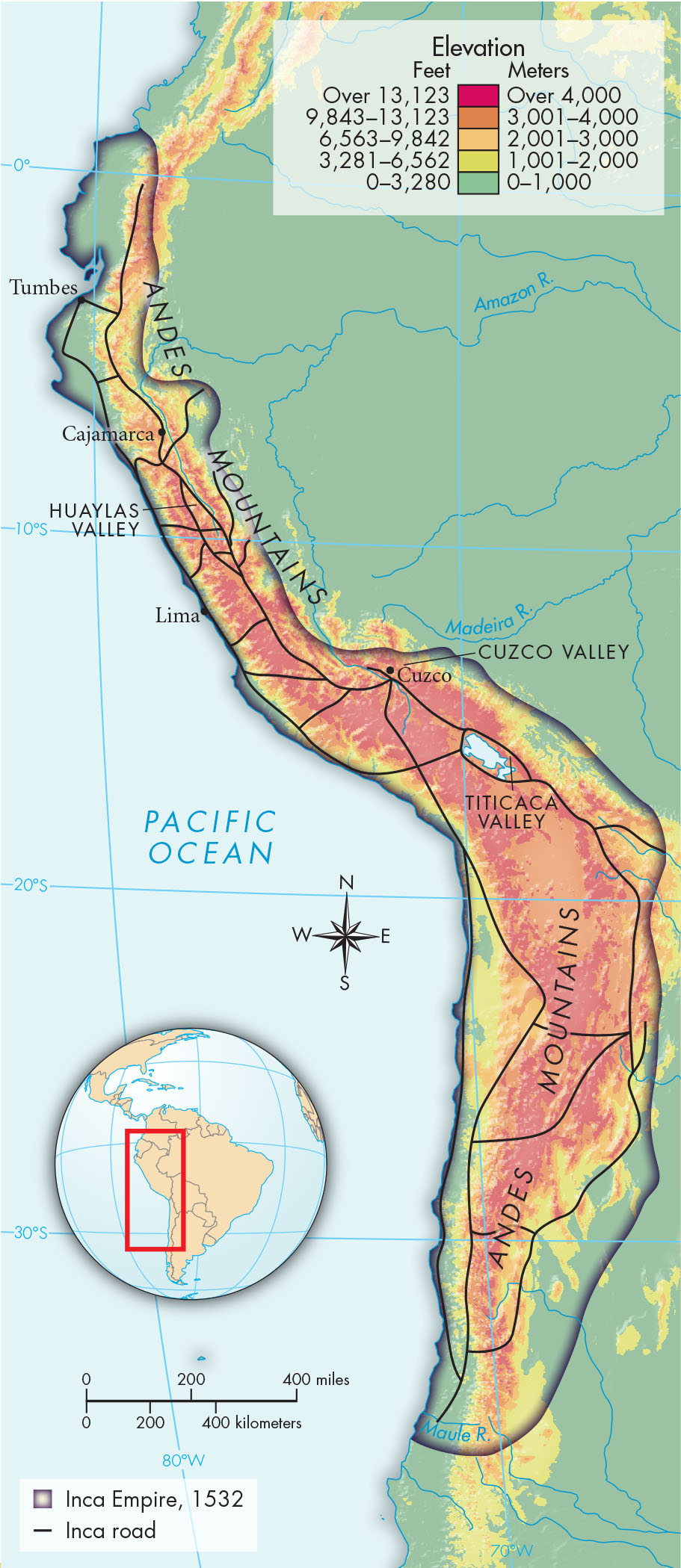A History of World Societies:
Printed Page 305
A History of World Societies Value
Edition: Printed Page 304
The Inca Model of Empire

In the Late Intermediate Period (1200–
From the 1420s until 1438 Viracocha Inca emerged as the first Inca leader to attempt permanent conquest. Unlike the sinchis (SEEN-
After conquering the Chimu, Pachacuti instituted practices that quickly expanded the empire across the Andes. He combined Andean ancestor worship with the Chimu system of a split inheritance, a combination that drove swift territorial expansion and transformed Tawantinsuyu into one of the largest empires in the world within less than fifty years. Under the system of ancestor worship, the Incas believed the dead emperor’s spirit was still present, and they venerated him through his mummy. Split inheritance meant that the dead emperor retained all the lands he had conquered, commanded the loyalty of all his subjects, and continued to receive tribute. A panaqa (pan-
When the ruler died, his corpse was preserved as a mummy in elaborate clothing and housed in a sacred and magnificent chamber. A sixteenth-
He was buried by putting his body in the earth in a large new clay urn, with him very well dressed. Pachacuti Inca [had] ordered that a golden image made to resemble him be placed on top of his tomb. And it was to be worshiped in place of him by the people who went there. . . . [He had] ordered those of his own lineage to bring this statue out for the feasts that were held in Cuzco. When they brought it out like this, they sang about the things that the Inca did in his life, both in the wars and in his city. Thus they served and revered him, changing its garments as he used to do, and serving it as he was served when he was alive. 1
The panaqa of descendants of each dead ruler managed his lands and used his income to care for his mummy, maintain his cult, and support themselves, all at great expense. When a ruler died, one of his sons was named the new Inca emperor. He received the title, but not the lands and tribute — nor, for that matter, the direct allegiance of the nobility, bound as it was to the deceased ruler. The new emperor built his own power and wealth by conquering new lands.